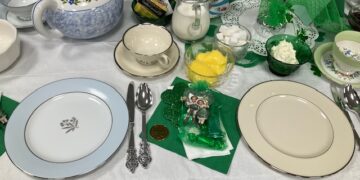
Did you know that more than half of the garbage you set out at the curb or take to the dump each week has the potential to help you grow healthier plants? As a country, we throw out 167 million tons of trash every year, according to the Institute for Local Self-Reliance, and 52% of that is composable. Nearly a quarter of it is food scraps! That includes not only fruit and vegetable peels but also the fuzzy leftovers from the back of the fridge and the wrinkly, sprouting potatoes from the bottom of the bin.
There are many ways to reduce food waste, including meal planning, mindfully incorporating leftovers, “shopping” the pantry, and even trying creative recipes like carrot top pesto or banana peel muffins, and I highly recommend looking into them. One of the simplest solutions, though, is composting. This practice diverts food scraps as well as paper products, yard trimmings, and wood waste from the landfill. Plus, it feeds your plants! Compost enhances soil structure, reduces erosion, and increases water and nutrient retention, fertility, and microbial activity.
I know that many people have many reasons for not composting, but those concerns almost always can be worked around or are simply not true. Composting takes minimal effort, does not require a lot of space, and when done correctly, does not smell bad or attract critters.
In its simplest form, compost is a pile. If you have a small space or otherwise want to keep things neat and tidy, you can purchase a bin from a garden center or hardware store, or you can make your own. I keep my compost pile corralled with a trio of wood pallets that I tied together to form a three-sided structure. When that filled up, I stacked old hay (which makes excellent mulch) next to it to create a second bin. This way, I can have one “active” pile that I add scraps to while the other pile is left alone to break down into the dark, crumbly, nutrient-dense substance often referred to as “black gold.” I recommend this two-pile method if you have the space, though many people get by with just one.
To get started, choose a location. My piles are at the edge of the yard but still fairly close to the garden so I don’t have to cart the finished compost too far. Although it may be tempting to tuck the compost in a far corner where it can’t be seen, remember that you have to carry kitchen scraps to it year-round. I once had a store-bought bin just steps from the back door, and it was wonderfully convenient. Waste went in the top, and compost came out the little sliding door at the bottom.
Next, cut any grass or weeds in your designated spot very short and lay down a thick layer of newspaper or cardboard (remove tape, staples, and stickers). If you’re using a store-bought bin with a bottom, you can skip this step and just plunk the container down where you want it. Otherwise, set up your pallets, hay bales, or other bin materials of choice, or simply leave the pile open.
Now we make compost! Compost ingredients can be divided into two categories: green, or nitrogen-rich, and brown, or carbon-rich. Green materials include things like fruit and vegetable scraps and grass clippings, while brown materials include dried leaves, twigs, wood chips, and paper. Different sources recommend varying ratios, ranging from half and half to three parts brown and one part green. Basically, you should aim for slightly more brown than green.
In addition to the examples listed above, coffee grounds and filters, tea bags, eggshells, shredded paper and cardboard, natural cloth like cotton and wool, hair, and fireplace ashes can all go on the compost pile. We keep a lidded cannister under the kitchen sink for food scraps and empty it once a week. It sits right next to the trash can, making it easy to separate things like tea bag staples and produce stickers as we place scraps in the cannister.
A few things should not be composted at home, including meat and other animal products, pet waste (except rabbit), coal or charcoal ash, any part of black walnut trees, diseased or insect-ridden plants, or yard trimmings treated with pesticides or herbicides.
Turning the compost pile with a shovel or garden fork will help speed up the process, but it’s not strictly necessary. An unturned pile will break down into dark, crumbly compost in about a year, while a pile turned every week can be ready in as little as two to five months. Finished compost should be a rich, dark brown and have a crumbly texture and earthy smell. Whenever it fully matures, that beautiful compost can be spread around your plants like mulch or worked into the soil before planting.
Reducing waste and creating your own all-purpose soil amendment: what’s not to love about compost?
































